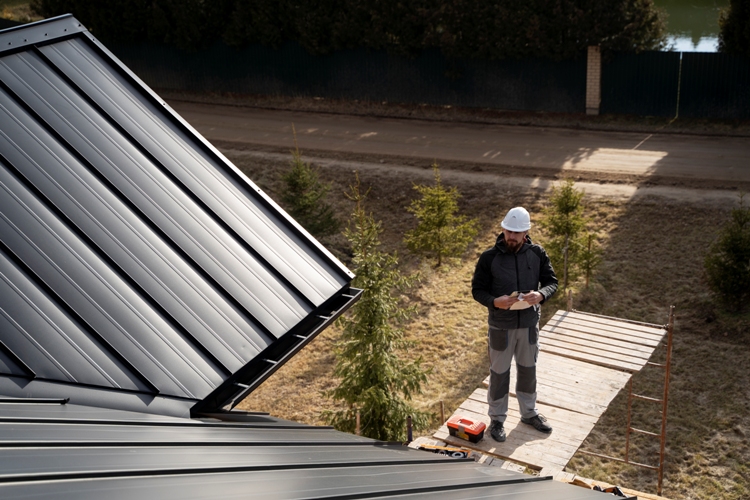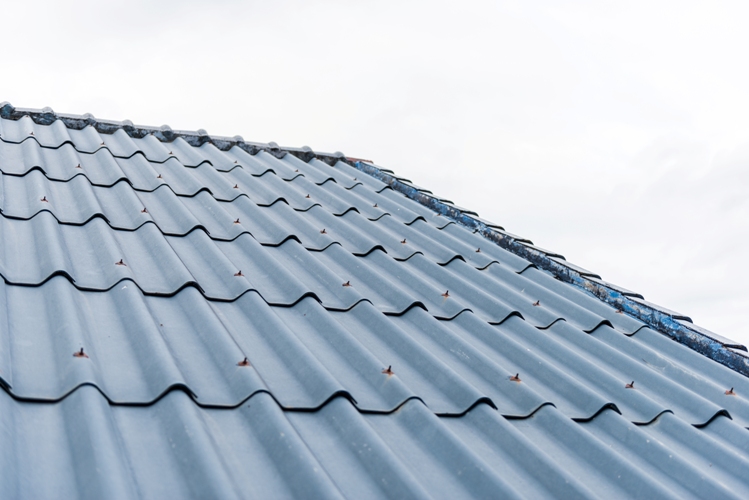Discover the key differences between sandwich roofing panels and traditional roofing systems, and find out which is better for heat-wave insulation and bushfire protection. Learn how Ezi-Batten can help you build a safer, more sustainable roof with expert-grade materials and an insulation blanket for modern roofing.
As climate change intensifies, extreme weather events like heatwaves and bushfires are becoming more frequent and severe. For homeowners and builders in fire-prone and high-temperature regions, choosing the right roofing material is no longer just about aesthetics or cost; it’s about safety, durability, and thermal performance. Two popular options stand out: sandwich roofing panels and traditional roofing systems. But which one offers superior protection against heatwaves and bushfires?
Let’s break down the differences and explore which roofing solution is best suited for the challenges of a warming world.
What Are Sandwich Roofing Panels?
Sandwich roofing panels, also known as insulated roof panels, are composed of three layers:
1. Outer metal sheet (usually steel or aluminum)
2. Insulating core (typically polyurethane foam, polystyrene, or mineral wool)
3. Inner metal sheet or lining
These panels are manufactured to provide excellent thermal insulation, structural strength, and fire resistance—all in one compact system.
Traditional Roofing Systems: A Quick Overview
Traditional roofing typically involves:
1. Roof framing (timber or steel battens and purlins)
2. Roof cladding (tiles, corrugated metal sheets, or shingles)
3. Insulation (added separately beneath the roof deck)
4. Roof accessories (gutters, flashings, etc.)
While this system allows for customization, it often requires multiple layers and components to achieve the same level of performance as sandwich panels.
Heatwave Protection: Which Performs Better?
Sandwich Panels:
1. Superior insulation: The integrated core reduces heat transfer, keeping interiors cooler during scorching temperatures.
2. Energy efficiency: Lower reliance on air conditioning means reduced energy bills.
3. Quick installation: Fewer components mean faster construction, minimizing exposure to heat during building.
Traditional Roofing:
1. Variable insulation: Performance depends on the quality and placement of insulation materials.
2. Thermal bridging: Gaps between layers can allow heat to penetrate.
3. Higher energy consumption: Less efficient insulation may lead to increased cooling costs.
Verdict: Sandwich roofing panels offer a clear advantage in thermal performance, making them ideal for regions facing frequent heatwaves.
Bushfire Protection: Safety First
Sandwich Panels:
1. Fire-resistant cores: Mineral wool and other non-combustible materials can slow fire spread.
2. Sealed construction: Fewer gaps reduce the risk of embers entering the roof cavity.
3. Compliance: Many panels meet stringent bushfire attack level (BAL) ratings.
Traditional Roofing:
1. Combustible materials: Timber framing and certain claddings may ignite under ember attack.
2. Vulnerable gaps: Openings between tiles or sheets can allow embers to lodge and ignite.
3. Retrofitting required: Additional fireproofing measures may be needed to meet BAL standards.
Verdict: Sandwich panels provide a more integrated and fire-resistant solution, especially when constructed with non-combustible cores.
Installation and Maintenance
1. Sandwich Panels: Easier and faster to install due to their modular nature. Minimal maintenance required.
2. Traditional Roofing: More labor-intensive and time-consuming. Maintenance depends on material type and exposure.
Cost Considerations
While sandwich panels may have a higher upfront cost, their long-term savings in energy efficiency, reduced maintenance, and enhanced safety often outweigh the initial investment. Traditional roofing may seem economical at first, but the added costs of insulation, fireproofing, and energy bills can add up.
Sustainability and Environmental Impact
Sandwich panels are often manufactured with recyclable materials and contribute to lower carbon footprints due to their energy-saving properties. Traditional roofing systems vary widely in sustainability depending on the materials used.
Final Thoughts: Which Should You Choose?
If you’re building or renovating in an area prone to heatwaves and bushfires, sandwich roofing panels are the smarter, safer, and more sustainable choice. Their integrated design offers superior thermal insulation, fire resistance, and ease of installation—making them a future-ready solution for modern construction.
Ready to Upgrade Your Roof?
At Ezi-Batten, we specialize in high-quality steel building products, including roofing solutions designed for Australia’s toughest conditions. Whether you’re looking for sandwich panels, battens, or accessories, our expert team is here to help you choose the best materials for your project.
Call us today at 07 5449 8765 or visit ezibatten.com to explore our full range of products. Let’s build something strong, safe, and sustainable—together.
Let me know if you’d like this formatted for a blog post, brochure, or social media campaign!
Recent Posts

-
October 24, 2025
Steel Roof Battens: The Smart Choice for Modern Roofing Solutions
Read More 
-
October 20, 2025
Metal Roof Insulation Blanket: A Smart Solution for Thermal Comfort and Energy Efficiency
Read More 
-
October 17, 2025
Insulated Roofing Panels: The Smart Solution for Energy-Efficient, Durable Roofing
Read More
Categories
- metal roof batten 12
- top hat battens 1
- metal fascia 2
- steel roof batten 34
- roof battens and purlins 7
- insulated roofing panels 21
- sandwich roofing panels 14
- roofers bracket 3
- gutter accessories suppliers 8
- metal ceiling battens 5
- metal fascia for modern roof 1
- Uncategorized 9
- metal roof insulation blanket 1
- cladding building materials 2
- top hat roofing 2
- metal roofing suppliers 5
- gutter and fascia replacement 3
